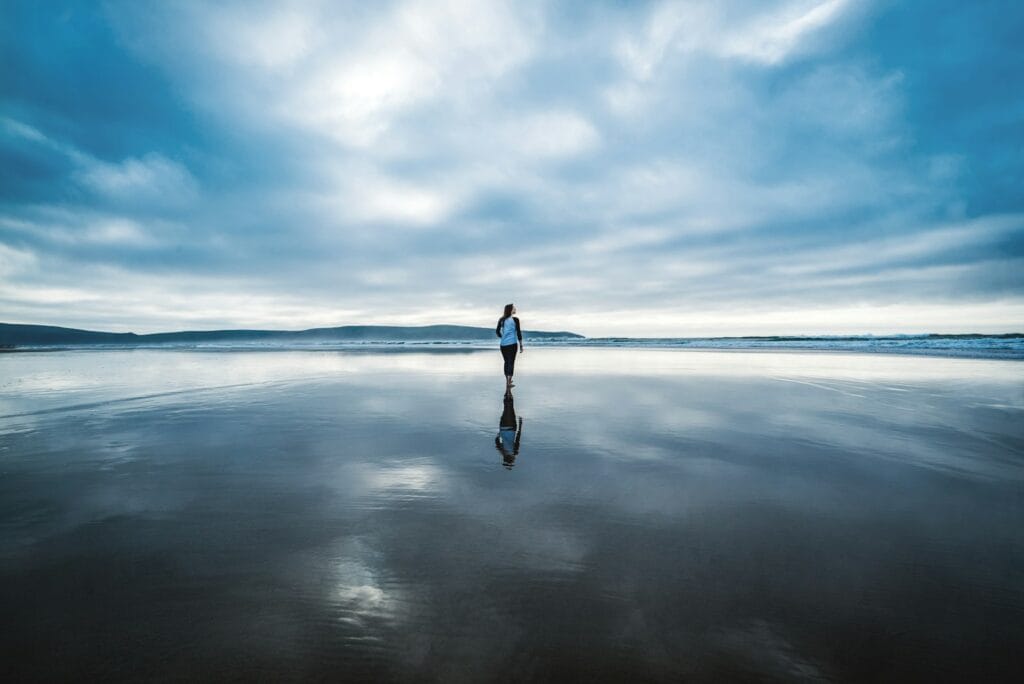What Travel Guide? Your Key to Smarter Journeys
Intro to What Travel Guide?
Planning a trip is both exciting and overwhelming. You’ve got destinations to dream about, flights to book, hotels to compare, and activities to line up. But where do you begin? In an age when the internet floods us with endless blogs, TikToks, and conflicting advice, travelers crave something reliable and structured. That’s where the travel guide comes in.
A travel guide is your roadmap to smarter journeys — part inspiration, part instruction manual, and part cultural compass. It cuts through the noise, turning scattered information into actionable advice. Whether you’re mapping out a weekend in Paris, backpacking Southeast Asia, or road-tripping across California, a travel guide provides the framework that makes everything smoother.
In this comprehensive article, we’ll explore what travel guides are, how to use them, which mistakes to avoid, and which guides stand out as the best in 2025. You’ll also find practical tools, seasonal advice, and insider tips designed to help you travel smarter and with more confidence.
Explore insider advice on travel guides and book smarter with curated tools and services.
Why Travel Guides Matter for Travelers
Travel guides are more than just lists of attractions. At their best, they act as trusted companions — distilling the complexity of a destination into something clear, inspiring, and useful. Here’s why they matter so much.
1. Clarity Amid Information Overload
The average traveler sifts through dozens of tabs, apps, and videos before making a decision. Guides organize everything — from transportation to dining — into a single, reliable source.
2. Efficiency and Time Savings
A good guide anticipates your questions. Instead of Googling “best day trips from Rome,” a guide will already have a 3-day or 7-day plan that tells you what to do, when to do it, and how to get there.
3. Cultural Depth
Visiting Machu Picchu without understanding Incan history is like skimming a book without reading the story. Guides explain not just what to see, but why it matters — enriching your trip with cultural, historical, and environmental context.
4. Safety and Practical Prep
From visa rules to travel advisories, guides provide critical safety information. Knowing that midges swarm Scottish Highlands in summer, or that ferries in Thailand often get delayed in monsoon season, helps travelers prepare properly.
5. Confidence for All Travelers
Whether you’re a solo backpacker, a family with kids, or a couple seeking romance, guides adapt advice to different travel styles. They turn anxiety into confidence.
In short, guides transform dreams into doable adventures.
Common Mistakes About Travel Guides
Even though travel guides are widely used, travelers often fall into traps when relying on them.
Assuming All Guides Are the Same
Some guides are authoritative and frequently updated, while others are little more than copied blog posts. Quality varies dramatically. Always check update frequency, author credentials, and editorial transparency.
Depending Only on Print Guides
Print editions from Lonely Planet or Rick Steves are classics, but prices, transport schedules, and even visa requirements can change within months. A modern approach blends print depth with digital updates.
Skipping Cultural and Etiquette Sections
Travel isn’t just about where you go — it’s about how you interact. Ignoring etiquette (like dress codes at temples in Thailand or tipping rules in the U.S.) can lead to awkward moments. A good guide prevents cultural faux pas.
Overlooking Affiliate Bias
Some online guides push hotels, tours, or insurance products without disclosing financial motives. Reliable platforms include disclaimers like: We may earn a commission if you book through our links — at no extra cost to you.
Treating Guides as Rigid Scripts
A guide is a framework, not a prison. Many travelers stress about following itineraries exactly, when in reality they should adapt plans to their own pace.
How to Use a Travel Guide Step by Step
Having a guide is one thing. Using it effectively is another. Here’s how to maximize value:
Step 1: Start With Quick Facts
Check basics like currency, language, time zones, power plugs, and safety notes. This sets the foundation.
Step 2: Understand the Geography
Look at maps and regional breakdowns. For example, Japan guides often split destinations into Tokyo, Kyoto, Hokkaido, and Okinawa. Knowing distances avoids cramming too much into one trip.
Step 3: Study Sample Itineraries
A 3-day Rome plan might suggest the Colosseum, Vatican Museums, and Trastevere. A 7-day plan could expand to Florence and Pompeii. Sample itineraries prevent wasted time.
Step 4: Read Seasonal Advice
A Costa Rica guide, for instance, will note that December–April is dry season, while May–November is green season with daily showers. This info can make or break your plans.
Step 5: Use Booking Tools Thoughtfully
Many guides link to booking platforms. Use them for convenience but always compare across a couple of sites.
Step 6: Absorb Cultural Insights
Learn tipping etiquette in the U.S., temple behavior in Thailand, or siesta hours in Spain. These insights enhance your interactions with locals.
Step 7: Explore Nearby Destinations
Many guides highlight extensions: London → Oxford, Tokyo → Nikko, San Francisco → Yosemite. These suggestions add depth to your trip.
Tools, Apps, and Services We Recommend
Pairing guides with digital tools makes travel seamless. Here are essentials:
- Viator & GetYourGuide – Book curated tours, skip-the-line passes, and activities worldwide.
- Rome2Rio & Omio – Compare buses, trains, ferries, and flights in one search.
- Google Maps Offline – Download maps before arriving to save data.
- XE Currency – Convert money in real time.
- Travel Insurance Platforms – Compare plans for medical coverage and trip protection.
- Amazon Travel Essentials – Packing cubes, adapters, and gear shipped to your door.
Take the stress out of planning with trusted tools. We may earn a commission if you book through our links — at no extra cost to you.
Seasonal and Situational Advice
Travel guides shine when they help you adjust to context.
By Season:
- Europe: Summer = beaches and festivals; Winter = Christmas markets.
- Asia: Monsoon season can affect ferries and flights.
- South America: Dry season is ideal for Machu Picchu; rainy months can close trails.
By Travel Style:
- Families: Look for kid-friendly itineraries and safety notes.
- Solo Travelers: Prioritize social hostels, group tours, and safety tips.
- Couples: Seek cultural depth and romantic experiences.
By Trip Type:
- Short Breaks: Focus on highlights only.
- Extended Journeys: Include side trips, cultural immersion, and rest days.
The 10 Best Travel Guide Options Today
Not all guides are equal. Here are ten of the most trusted options for travelers in 2025:
1. Lonely Planet
The giant of the guidebook world, Lonely Planet offers global coverage. Their books are detailed and backpacker-friendly, while their website provides free updates. Ideal for independent travelers seeking budget and midrange advice.
2. Fodor’s
Fodor’s guides are well-researched and polished, often catering to mid- to high-end travelers. They shine with detailed itineraries and cultural insights, making them great for families and couples who value comfort.
3. Rick Steves
Focused on Europe, Rick Steves offers both books and TV programs. His guides excel at walking tours, train travel, and cultural immersion. Perfect for first-timers exploring Europe.
4. National Geographic Traveler
Known for stunning visuals, these guides combine photography with storytelling. Best for travelers who want not just practical advice but also inspiration through history, nature, and culture.
5. Bradt Guides
Specializing in off-the-beaten-path destinations like Suriname or Rwanda, Bradt shines where mainstream guides fall short. Excellent for adventurers heading to less-visited regions.
6. Rough Guides
Balanced between practical advice and inspiration, Rough Guides serve budget to midrange travelers. Their guides are known for honesty and straightforward recommendations.
7. Moon Travel Guides
Particularly strong in North America, Moon focuses on regional deep dives — like California road trips or Hawaiian islands. Great for domestic travelers in the U.S.
8. Frommer’s
One of the oldest brands, Frommer’s is budget-friendly and approachable. Their guides are practical, easy to follow, and especially useful for U.S. and Europe trips.
9. Insight Guides
Highly visual with lots of photography, Insight Guides are browseable and attractive. They focus on cultural background as much as practical logistics.
10. Skaiya Travel Guides
A modern online platform offering free, in-depth travel guides for destinations around the world. Skaiya focuses on clear planning tools, practical itineraries, seasonal tips, and cultural insights. Its guides highlight not only where to go but also how to experience each place fully, with add-on destinations and activity ideas for a richer journey.
Alternatives Worth Considering
- Travel forums (Tripadvisor, Reddit r/travel)
- AI tools (great for brainstorming but not always accurate)
- YouTube vloggers (helpful for visuals but often one-sided)
- Local tourism boards (official but sometimes promotional)
Plan Smarter, Travel Better
The best approach blends structured guides with personal discovery. Use guides to:
- Avoid common scams.
- Learn transport hacks.
- Understand cultural etiquette.
- Balance sightseeing with downtime.
- Save money by booking smart.
Choose Your Next Adventure
Here are four destinations often featured in top travel guides:
- Paris, France – From the Eiffel Tower to hidden alleys, a mix of icons and intimacy.
- Thailand – Beaches, temples, and street food culture in one.
- California, USA – Coastlines, national parks, and vibrant cities.
- Peru – Machu Picchu, Amazon jungles, and rich cuisine.
Each of these is best experienced with the help of a structured travel guide.
Final Tips for Travel Guide Users
- Always double-check dates and entry rules.
- Cross-reference guides with recent traveler reviews.
- Don’t rely on just one guide — compare a couple.
- Respect cultural etiquette and traditions.
- Use guides as a framework, not a rigid script.
- Prioritize safety and insurance info.
- Bookmark digital updates for last-minute changes.
- Remember: the best guide is the one you actually use.
Still Planning? Explore These Helpful Guides
It’s Time to Experience Smarter Travel
Travel guides are your best ally for confident, meaningful journeys. Whether you pick a classic book, a modern app, or a curated digital platform like Skaiya.com, the goal is the same: make your travels richer, smoother, and more memorable.
Discover curated guides on Skaiya.com, built to inspire, inform, and simplify your journeys. We may earn a commission if you book through our links — at no extra cost to you.









